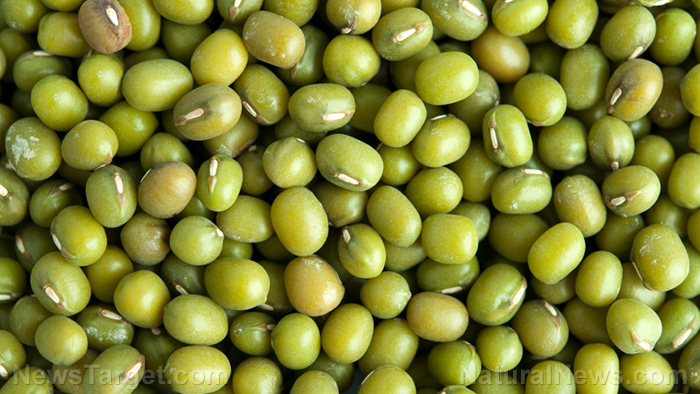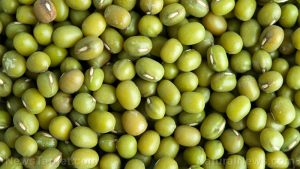
Mung Bean – sources, health benefits, nutrients, uses and constituents at NaturalPedia.com
Friday, June 30, 2017 by Earl Garcia
http://www.naturalpedia.com/mung-bean-sources-health-benefits-nutrients-uses-and-constituents-at-naturalpedia-com.html

Mung beans are warm season annuals that belong to the legume plant family, which includes adzuki and cowpea. Mung beans have long been a part of Indian cuisine, and are still cultivated in various regions cross the globe such as Southeast Asia, Africa, South America, and Australia. Mung beans are more commonly known as Chickasaw peas in the United States, which consumes between 15 million and 20 million pounds of mung beans annually, nearly 75 percent of which are imported.

List of known nutrients
These high protein legumes are known for their rich nutrient content, which include the following:
- Calcium
- Choline
- Copper
- Folate
- Iron
- Magnesium
- Manganese
- Niacin
- Pantothenic Acid
- Phosphorus
- Phytosterols
- Potassium
- Riboflavin
- Selenium
- Sodium
- Thiamin
- Vitamin A
- Vitamin B6
- Vitamin B12
- Vitamin C
- Vitamin E
- Vitamin K
- Zinc
Medicinal uses for mung beans
Mung beans are known to increase the body’s metabolic and digestive rates, reducing cholesterol build-up in the arteries and capillaries. Aside from this, mung beans contain high levels of magnesium that act as a vasodilator, relaxing blood vessels and prevent the onset of hypertension. Mung beans are also known for their high antioxidant content that keeps free radicals in check. The beans are known to naturally suppress free radicals, thus lowering the risk of developing cancer.
Mung beans are found to promote the formation of beneficial sugars and prevent the formation of otherwise harmful sugars. Likewise, mung bean consumption may regulate the body’s sugar metabolism and prevent the development of diabetes. The ample fiber supply in mung beans increases the body’s metabolic rate and facilitates proper digestive motion, reducing indigestion and acidity. The legume’s rich fiber content also makes the plant easier to digest. Additionally, the high protein levels in mung beans fortify the liver and protect it from jaundice.
In addition, mung beans contain anti-toxic properties that eliminate toxins and maintain the body’s circulatory health. Mung beans are known to bolster the body’s immunity as well. The high vitamin C levels in mung beans increase white blood cell (WBC) production during a viral attack. Mung beans are also an excellent source of iron, an essential mineral that eases muscles and tissues and activates WBCs in the blood. This makes mung beans an especially powerful superfood against immunodeficiency disorders.
Moreover, the ample iron supply in mung beans are found to increase mental focus and awareness. The legume’s high calcium content can also increase bone strength. Mung beans are also an excellent source of vitamin K that promotes blood clotting and prevents excessive blood loss. Additionally, the high vitamin C levels in mung beans are found to maintain the retina’s flexibility, making mung beans a contributor to eye health.
Furthermore, mung beans are known to promote skin health and maintain the scalp’s good condition.
Body systems supported by mung beans
Mung beans are especially beneficial to the body’s digestive, circulatory, and immune systems. The legumes also promote brain, bone, skin, and eye health.
Ways to use mung beans
As a popular alternative to animal protein, mung beans are incorporated in a variety of vegan dishes such as salads, dumplings and even burritos. Online recipe curator 101Cookbooks.com has compiled many interesting recipes that use mung beans.
Where to learn more
- Sprouting Organic Mung Beans
- The Mighty Mung Bean
- Six ways Ayurvedic medicine can change your life
- 14 foods that naturally remove toxins from body
- Good news for menopausal women: You can avoid hot flashes by changing your diet
Summary
Mung beans prevent cancer, heart disease, and diabetes.
Mung beans stave off digestive issues and excessive bleeding.
Mung beans benefit the digestive, circulatory, and immune systems.
Mung beans promote brain, bone, skin, and eye health.
Sources include:
Tagged Under: Tags: mung bean





